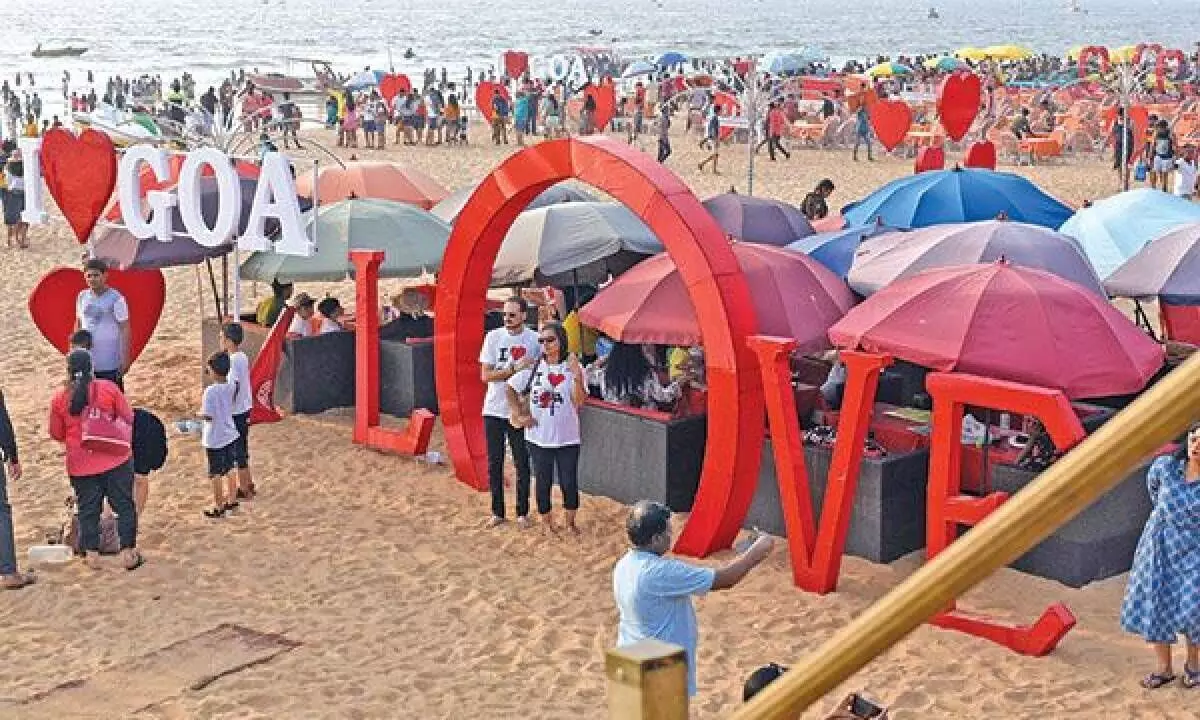Challenges ahead for tourism in Goa
The towns blend Portuguese and Indian cultures but summer could be extremely hot
image for illustrative purpose

Food, fun and feni not necessarily in that order are some of the key attractions that bring in Indian and international tourists to Goa. Blessed with scenic beaches like Colva Beach, Palolem Beach and Butterfly Beach, sun and sand and the architectural splendour of its Goan temples, churches, and Old Portuguese houses, Goa remains a favourite tourist destination for travellers from around the world.
Goa offers a uniquely distinct way of life where people of all religions live in harmony. A blend of Portuguese and Roman influences, its cuisine is mouthwatering. The locals are friendly and hospitable, aiding this state in truly becoming a ‘Tourist's Paradise’.
Goa is located on the Konkan Coast, 600 kms to the south of Mumbai. The state has an area of 3,702 sq km. It has a well-developed social, physical and industrial infrastructure and virtual connectivity. It has an international airport that is in line with its importance as a globally-recognised leisure destination. A second greenfield international airport is being developed in Mopa with an annual capacity of 30 million passengers by phase IV. Tourism contributes 18 percent of the state’s net domestic product, and 14 percent of foreign currency earned in the country. During peak season, an estimated 8.1 million people visit this beachside town.
The towns boast a unique blend of Portuguese and Indian culture, which you can see in the architecture of buildings like Basilica de Bom Jesus, museums such as Braganza House, and of course, its cuisine.
Goa was an important destination on the hippie trail, and you can join those seeking spiritual enlightenment at Arambol Market, in drum circles, and yoga retreats.
There is so much to do that it’s no wonder that it is one of India’s most popular tourist destinations. However, you might want to know more safety information before you go there, as you should before visiting any new destination.
In the United States travel advisory for India, the State Department lists states and regions in India that you should avoid due to heightened risks of terrorism and conflict, but Goa is not on the list.
It is not close to India’s disputed borders or a place that suffers from regional conflicts. Other countries include Goa in their list of places to pay special attention to while in India.
Besides being aware of crime, you should be aware of threats to your safety that come from nature in Goa. Many tourists come to enjoy the beaches and water sports, but make sure that you do so safely. The sun can get very hot, so stay in the shade, when possible, apply sunscreen, drink plenty of water, and avoid being out and about in the worst of the heat. Some of the major issues of Goa tourism include over-utilized waste disposal facilities, dumping of solid and liquid wastes and insufficient implementation of deterrent measures against beach pollution, water bodies, and environmentally sensitive regions, and violations of coastal zone control.
Monsoon season in Goa lasts from June to September, with nearly daily rains.
Some tourists still visit Goa during this time since that is the best season for some water sports, such as whitewater rafting.
However, swimming on the beaches can get dangerous during monsoon season due to the choppy water conditions.
Although it is safer than other parts of India, it also has a problem with crime. According to Numbeo’s crime index, Goa scores 48.55 out of 100, which is a moderate value on the site’s scale. Though cases of sexual assault and murder of tourists grab the headlines, the most likely crime you will encounter while you are there is petty thefts, which, while not as high as elsewhere, are still fairly high.
Although Panaji the capital of Goa has taken the lead in waste management, the movement should spread across Goa, especially in Margao, the state’s commercial capital. Waste management cannot be done selectively it should encompass the whole state.
The future of tourism lies in sustainable tourism and Goa, with its high literacy rate, should show the way.

